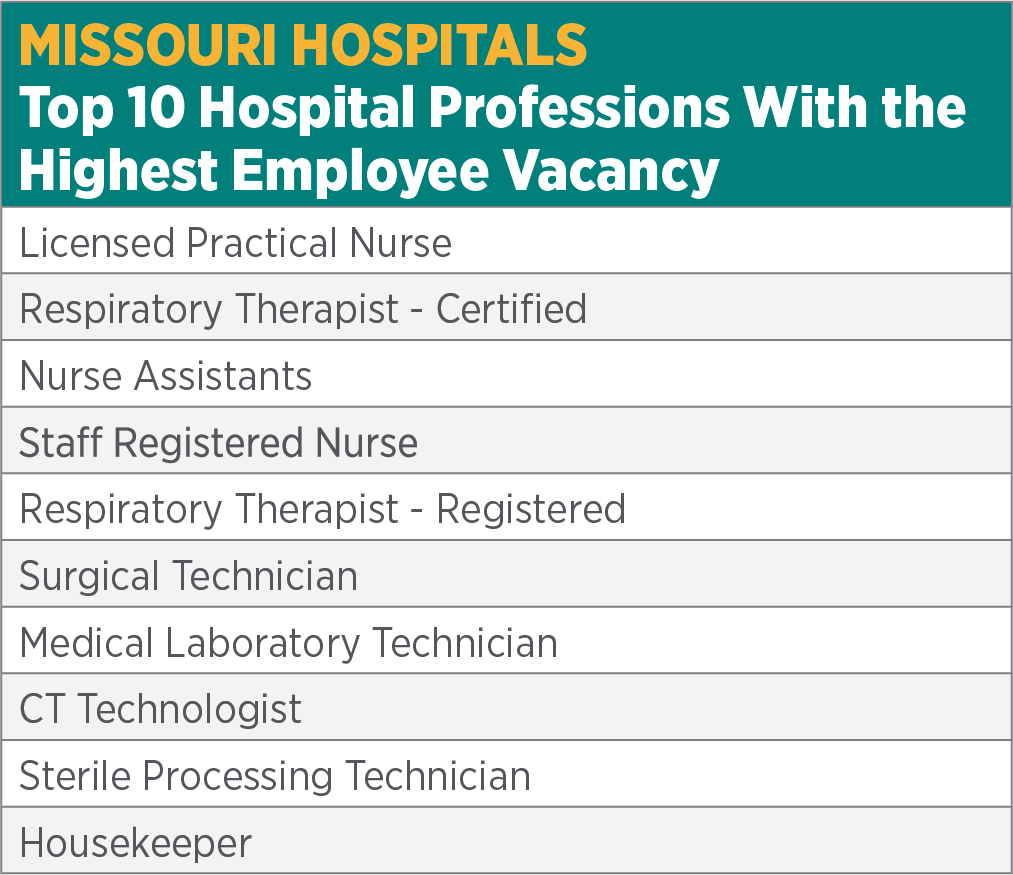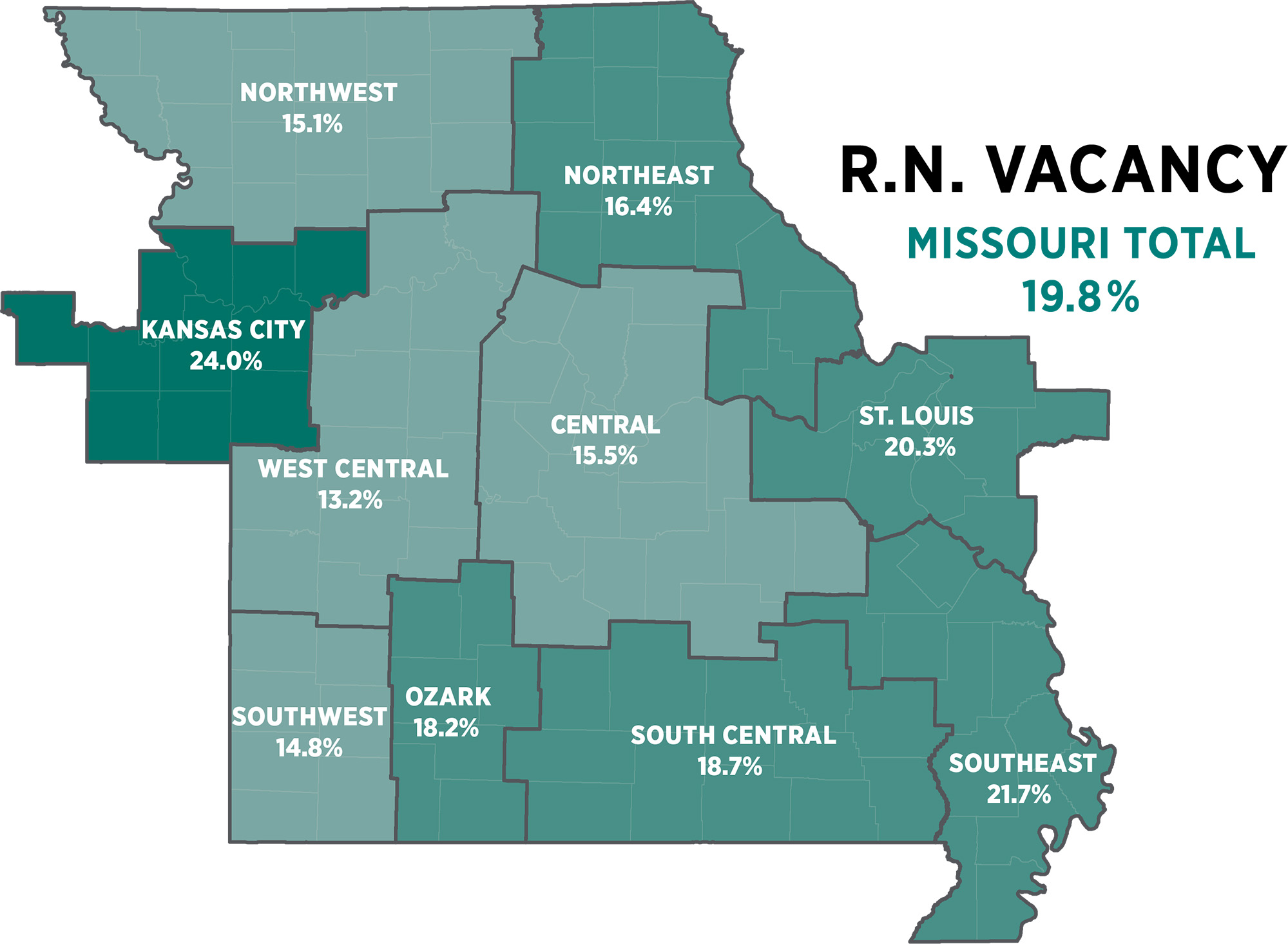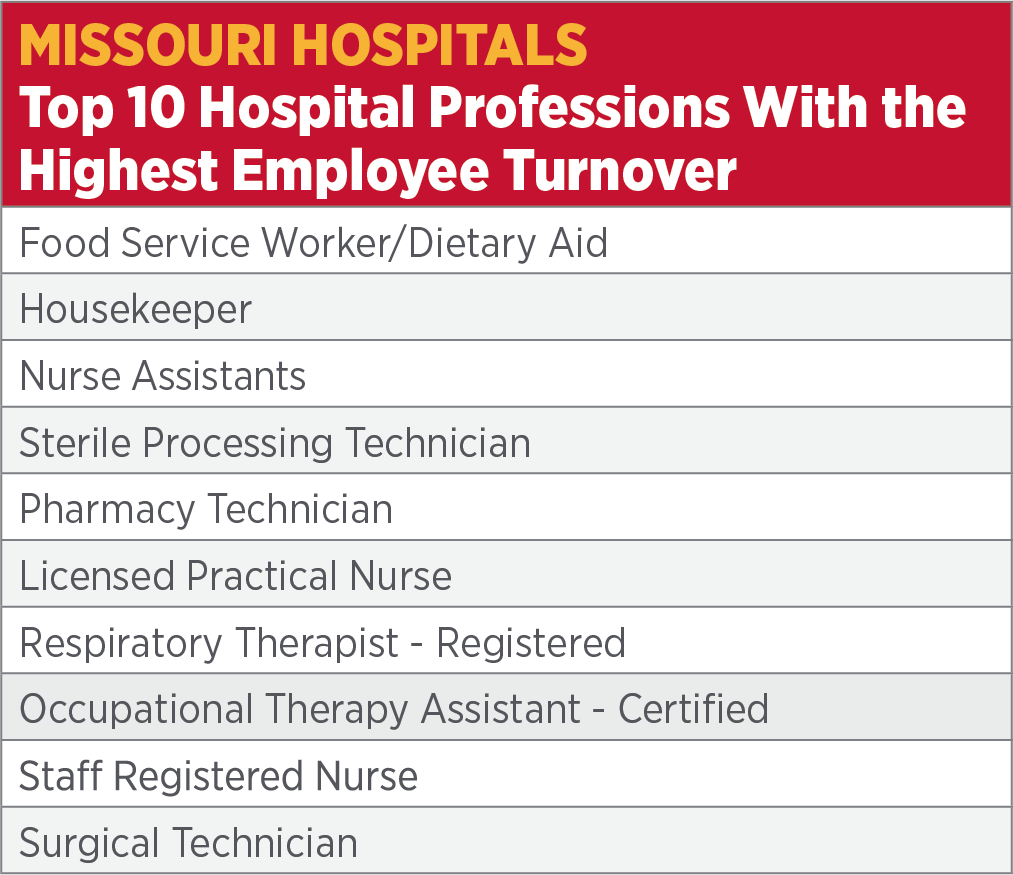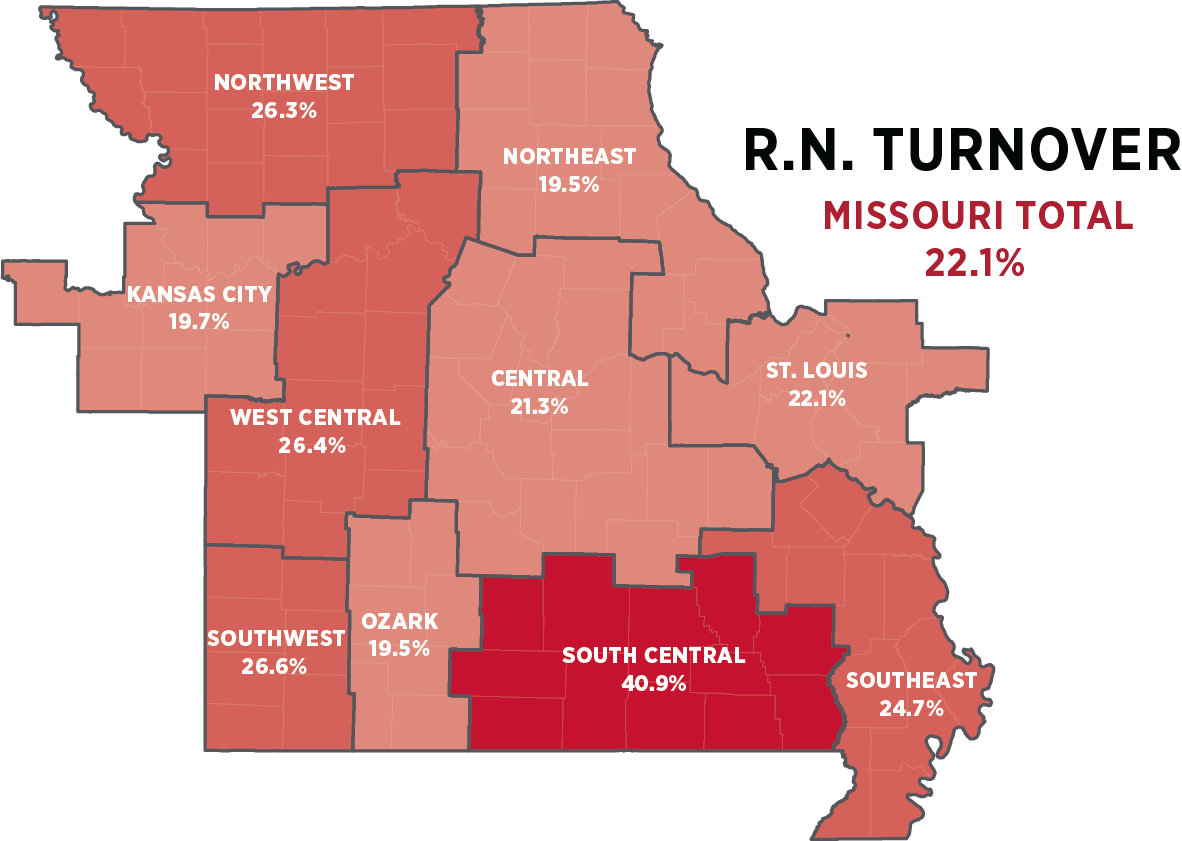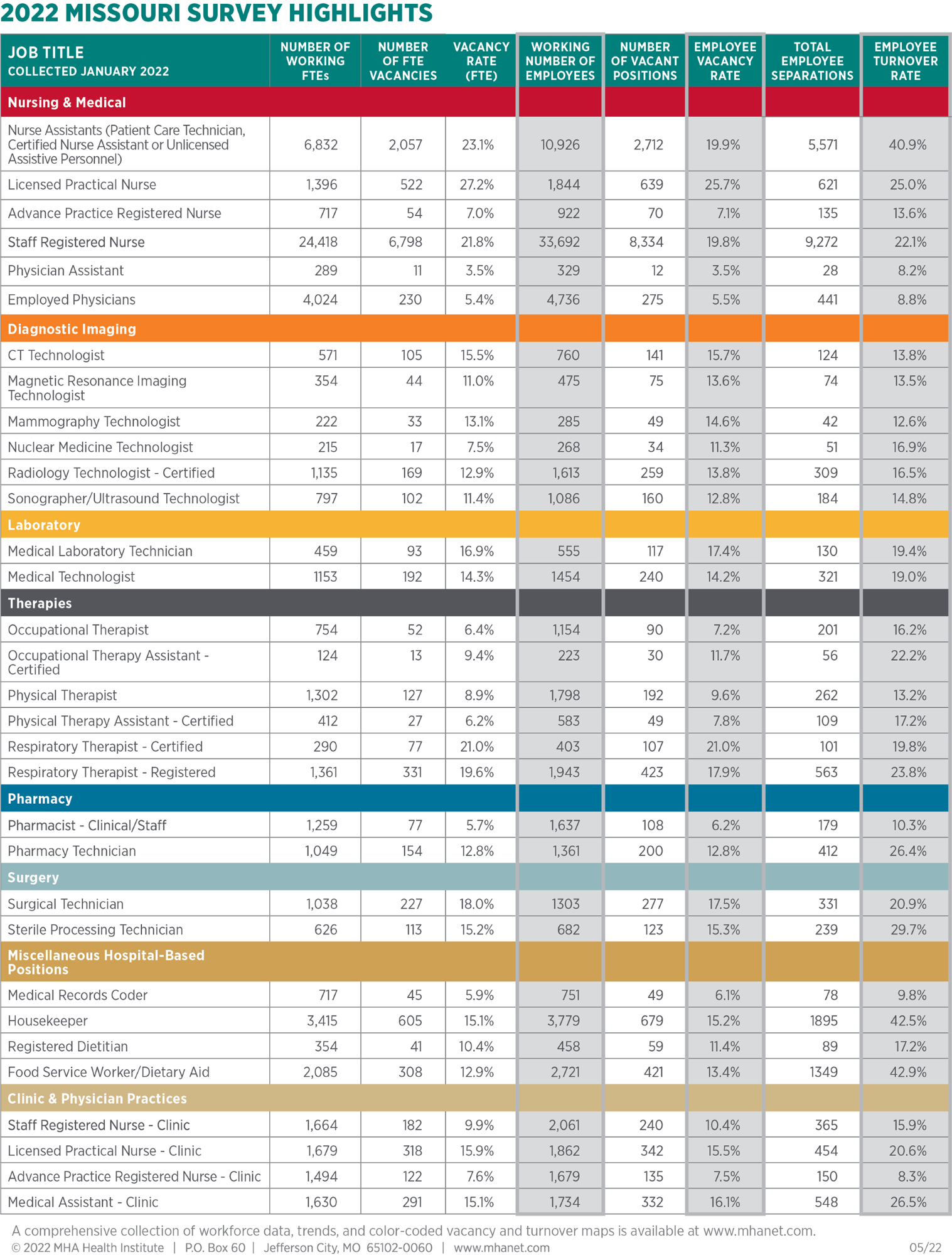Expert
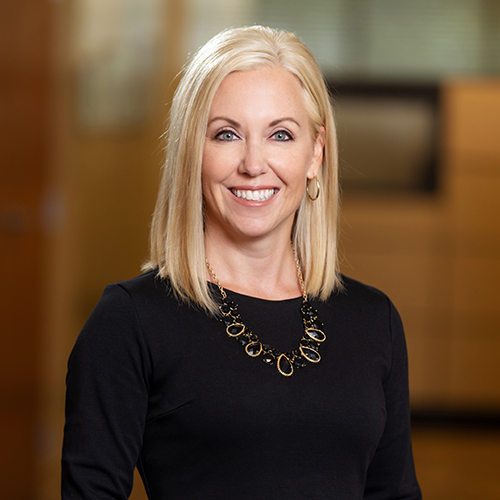
Jill Williams
Actions
Type
Topic
- Economic Impact
- Workforce
Tags
Statewide and nationally, hospital leaders cite the workforce crisis as the top operational issue. Vacancy and turnover rates in 2021 were near or above record levels before the pandemic and have exceeded the 2020 levels. COVID-19 has caused significant disruption in the health care workforce, making the long- and short-term challenges for care delivery and workforce sustainability considerably more pronounced.
While health care organizations were quick to meet the demand for increased patient care during the pandemic, their focus now is shifting to the future of health care delivery. This includes exploring new innovations in workforce recruitment and retention efforts. Workforce investments can contribute to the success of an organization through recruitment cost savings, reduced turnover, higher patient satisfaction and increased quality of care.
The data in the Missouri Hospital Association’s 2022 Annual Workforce Report reflect the status of the hospital workforce in 2021, thus continuing to reflect a COVID-19 workforce. This report finds increased vacancy and turnover rates among the majority of health care positions surveyed. The data indicate that both turnover and vacancy rates among all professions surveyed reached an all-time high statewide. The 17% vacancy rate represents an 87% increase in vacancies since 2020 (Figure 1).
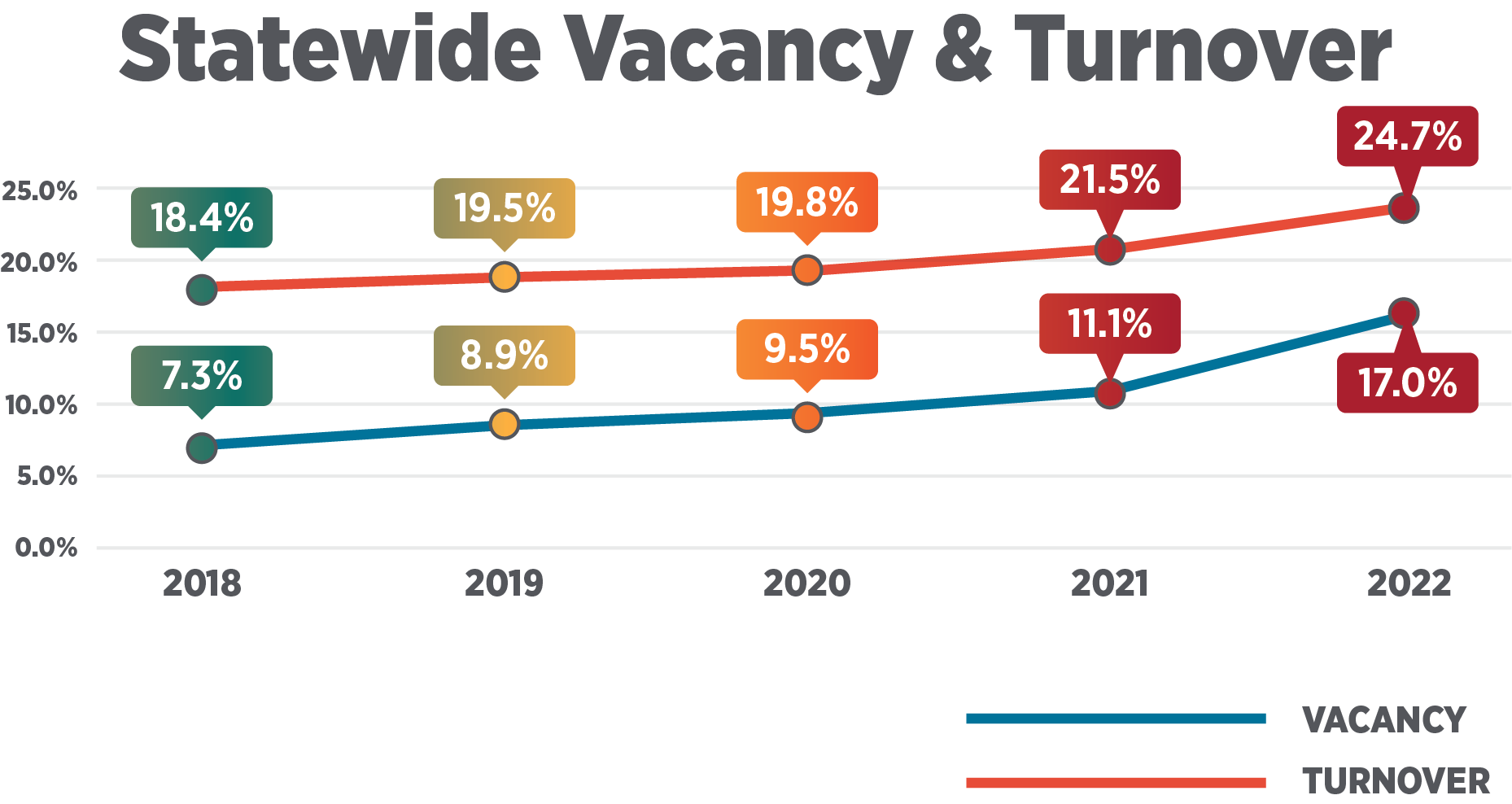
Staff registered nurses make up the largest single cohort of hospital employees in Missouri. This year’s report finds staff nurse vacancy at 19.8% — an increase from 12% in 2021 — the highest it’s been in the history of this survey. Since 2020, there has been a 98% increase in all staff registered nurse vacancies (Figure 2). According to the survey data, Missouri has 33,692 nurses working in hospitals and 8,334 vacant staff nurse positions.
Staff nurse turnover increased to 22.1% from the previous year’s rate of 18.1% (Figure 2). This level of turnover is costly and disruptive for health care systems, and can impact morale, disrupt the nurse and patient experience, and exacerbate an already pressing shortage of qualified talent.
2022 Statewide Report
A printable Workforce Report also is available.
The report includes data from 128 hospitals and identifies trends among 28 hospital-based positions and four clinic and physician practice positions.
2022 Regional Reports
- Central
- Kansas City
- Northeast
- Northwest
- Ozark
- South Central
- Southeast
- Southwest
- St. Louis
- West Central
Also available is a workforce report specific to Missouri’s critical access hospitals. Missouri is home to 35 CAHs, and each submitted CY 2021 data for MHA’s 22nd annual workforce survey that focuses on turnover and vacancy rates both regionally and statewide.
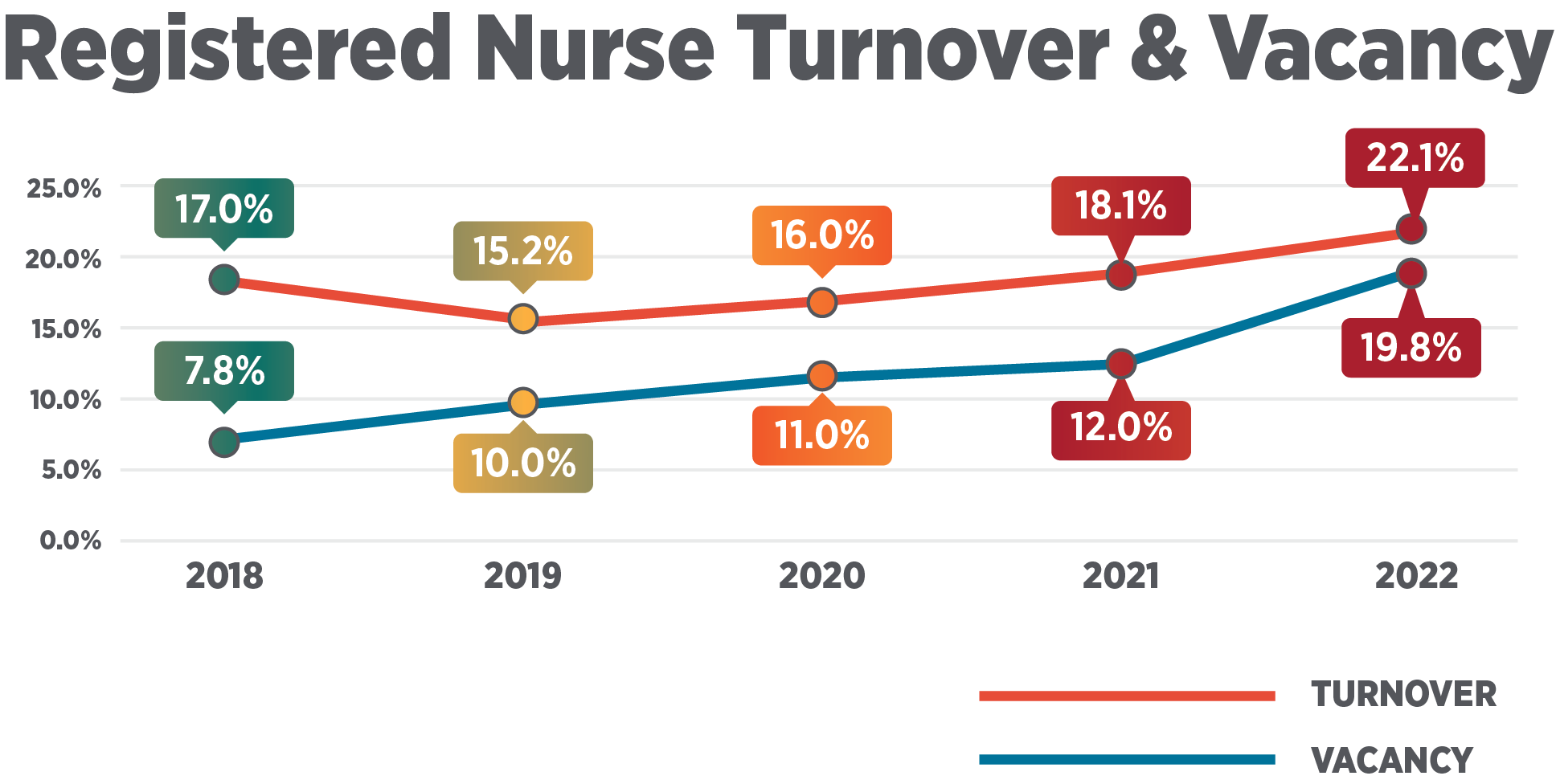
This strain on the workforce contributes to a perfect storm driving significant staffing shortages. All hospitals are experiencing increases in turnover, largely driven by early retirements, job changes to other opportunities and exits to other professions. Front-line health care workers are facing burnout after nearly two years of pandemic response. According to national research from McKinsey & Company, 32% of nurses indicated they may leave their current position where they provide direct patient care within the next year.
Rates for travel nurses hit record levels during the pandemic as hospitals were taking on significant costs to pay for travel agencies. Moreover, the influx of high-cost agency staff disrupted workplace cultures and resulted in hospitals’ staffing costs skyrocketing.
To meet the greatest demands, hospitals are working to reallocate and retrain nurses and other personnel. Some hospitals are reevaluating their skill mix, working toward team-based and virtual care models, and fostering career ladders and professional development. In addition, they are using tools to recruit, retain and reward staff, including financial incentives, new flexibility and support systems within the workplace, and personal wellness programs.
Pre-pandemic workforce pipeline challenges are magnified. Schools are struggling to access essential clinical rotations for student training because of a lack of hospital staff. And, increasing shortages of nursing faculty make it difficult for schools to accept all interested students. The Missouri State Board of Nursing 2020 Annual Report indicates that of the 90 Missouri pre-licensure nursing programs, there are at least 45 unfilled full-time and 44 open part-time/adjunct nurse faculty positions.
There were 10,424 nursing students enrolled in 2020; however, 1,296 qualified applicants were turned away. While some of these applicants may have applied to multiple schools, the number of qualified applicants that cannot be accommodated is staggering. Missouri’s nursing programs report that an additional 87 full-time faculty positions would be necessary to accommodate all applicants who are deemed qualified for admission. And, annual reports suggest that at least 126 Missouri nurse educators plan to retire within the next five years.
Nursing is not the only clinical profession that has been highly impacted by the pandemic. Respiratory therapists who worked day in and day out to provide critical care to COVID-19 patients also are in short supply. Since 2020, vacancies have grown 90% for all certified respiratory therapists (Figure 3). RTs support care for many of the sickest patients, including patients placed on a ventilator.
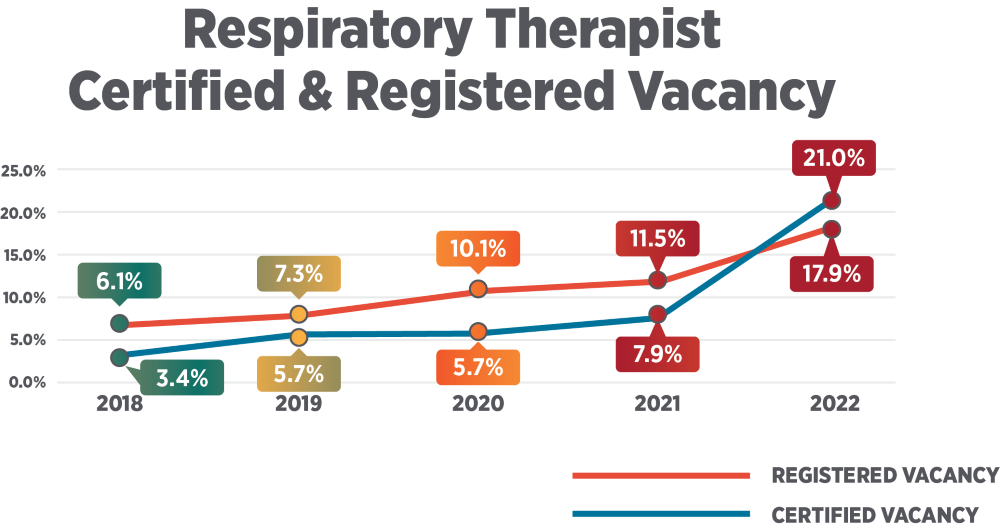
The hospital workforce is essential to the health and well-being of all Missourians. As is being demonstrated within the incumbent workforce, career ladders, institutional cultural change and innovative retention strategies can help provide a bridge during the worker supply and demand imbalance. The lessons learned during COVID-19 will help shape these efforts.
Hospitals and health systems, higher education institutions, government, and others — from the local to the national level — have recognized the structural problems in the workforce. There is a growing commitment to investing in today’s workers while fostering opportunities for tomorrow’s workers. Every Missourian has a stake in the success of this effort. Creating a sustainable hospital workforce will require innovation and investment. Access to health care services, the health and well-being of health care workers, and the future of patient care depend on these efforts.
METHODOLOGY
A total of 128 Missouri hospitals participated in this year’s survey. The survey requested data on 28 hospital health care positions, and four clinic and physician practice positions. Responses are collected by Missouri Hospital Association. Data are reported as of Dec. 31, 2021.











